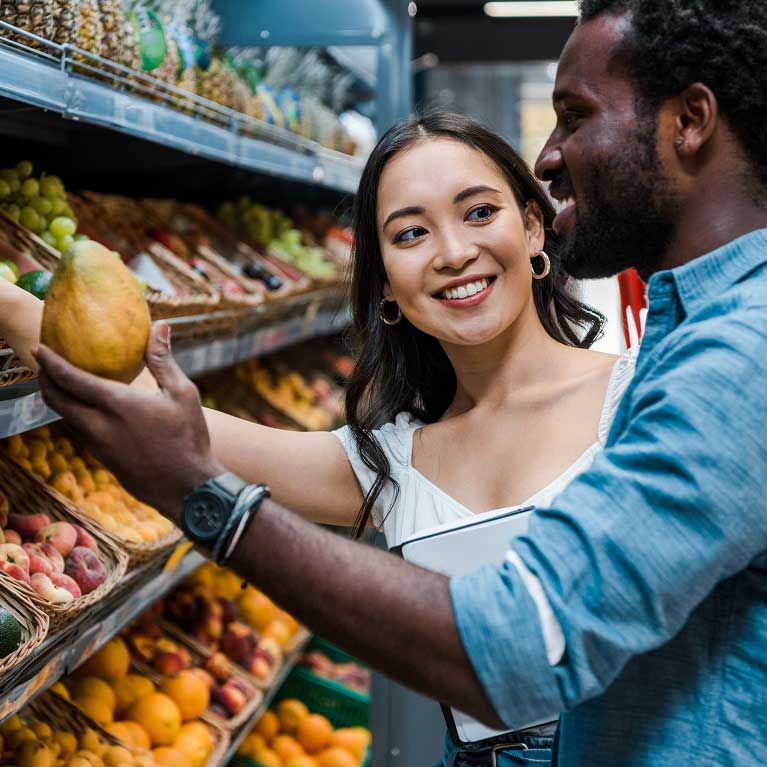Organic certification: Foods to buy organic
June 13, 2023




Once limited to small sections at grocery stores, the amount and variety of certified organic foods and ingredients offered to consumers has grown to almost rival its non-organic counterparts.
But many people still have questions. What does organic mean? Is organic food really better for you? How do you know which are the best foods to buy organic when the time comes to fill your basket at the grocery store or farmers market?
When you are standing in your store’s produce section looking at two containers of red, ripe strawberries – one labeled certified organic and one not – it might be hard to see any difference between them. If you sampled both berries, they might even taste the same.
The difference is in how the berries were produced. Official definitions of organic depend on the agency certifying the product, but in general it means the items have been produced without synthetic pesticides, herbicides or fertilizers. They have not been grown in a field treated with sewage sludge, or been subject to genetic engineering, or irradiated to lengthen their shelf life. If you are buying organic meat, eggs or dairy, then those products have not been produced using antibiotics or growth hormones.
So, do all those rules mean organic food is better for you? Ongoing research is suggesting that organic produce contains more nutrients than its conventionally grown counterparts. It also likely has less harmful substances.
Because organic farming prohibits the use of chemical pesticides and herbicides from the process, it helps keep harmful toxins from getting into the crops and any subsequent products made from them.
And while many organic fruits and vegetables may not be quite as picture perfect as what you see from conventional farms that use multiple treatments to ensure their beauty, those unsightly scars and misshapen lobes could actually indicate healthful benefits.
Those imperfections are signs of exposure to stress, such as insects, extreme weather or poor soil. Research suggests that the stress results in higher levels of phytonutrients, or plant nutrients, in the produce.
Those plant nutrients, which also give the fruits and vegetables their vibrant colors, help our bodies perform at their optimal levels.
When it comes to making a list of foods to buy organic, are certain items better than others? If you’re concerned about pesticide residue, some might be. Each year the U.S. Department of Agriculture tests a sampling of domestic and imported foods to measure the amount of pesticide residue left after it’s been washed for consumption.
Researchers from outside groups then analyze this data and come up with a list of the top 12 fruits and vegetables that were found to have had the most pesticide residue, compared to other items tested. According to the most recent list, these are the foods that experts say are best to buy organic if you can:
It’s important to note while residue was found during testing, 99% of the tests came up with levels within the allowable limits.
At grocery stores, organic food that has been grown and produced under a set of strict federal guidelines will carry a sticker or seal indicating compliance. In the U.S., USDA organic certification is shown by the presence of the USDA certified organic seal. In Canada, it’s the USDA seal or the Canadian organic logo.
If you are buying from a farm stand or at a farmers market, you can look for other kinds of signals that convey what you are buying is organic. Some farmers have gone through the arduous process of certifying their products as organic and will likely have a sign spelling that out.
Others may advertise their produce as “chemical-free” or as being “raised organically.” While they have not been certified by the government, most are happy to talk about their farming methods. Striking up a conversation with them will be the best way to find out the backstory to their products and allow you to make your purchases with confidence.
In the U.S. there are four different types of organic labeling found on foods covered by the USDA because the government recognizes different levels of organic products. (Canada has slightly different labeling rules.) Here’s a quick primer on what the USDA labels mean when you see them on products:
When you are searching for organic foods and other organic products, it pays to read the labels and understand the quality behind the brand.
For example, you may love smoothies made with superfood powders to help fill your nutrient gaps. If you choose Nutrilite™ Organics Green Superfood Powder or Immunity Superfood Powder, you’ll find the USDA Organic seal on the package providing reassurance of the added benefit that the nutrients come from organically grown produce.
In fact, the Nutrilite brand owns and operates four certified organic farms and works with trusted partner farms to supply ingredients for a variety of products, including the Nutrilite Organics line. It’s the first and only global vitamin and dietary supplement brand with a USDA Organic Certified product line to grow, harvest and process plants on its own certified organic farms.*
Farming with organic practices was part of the Nutrilite brand from the beginning. Check out additional articles on Amway Discover to learn more.
*Source: Euromonitor.com/amway-claim
By selecting cancel, the new IBO must complete the rest of the registration process, including payment. You will not be able to return to the payment option.
The new IBO will receive an email with a link to complete the process